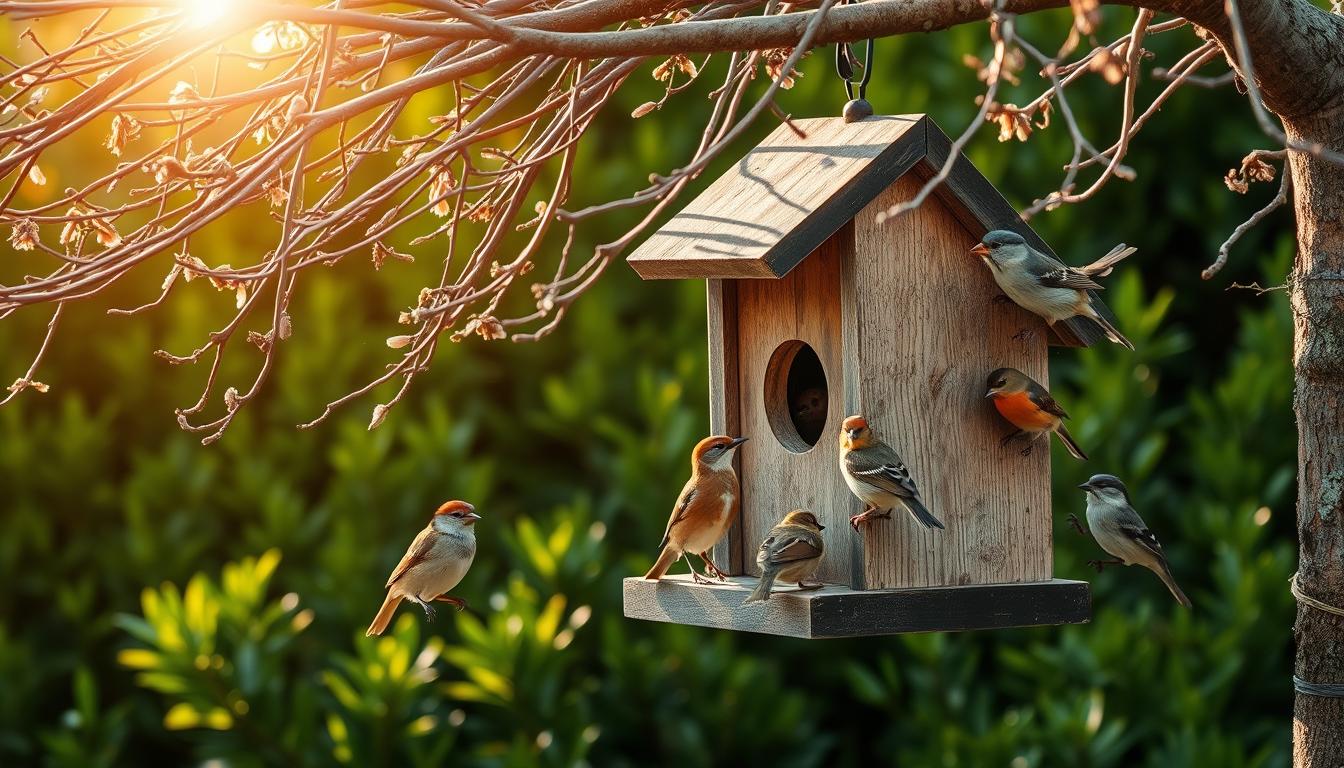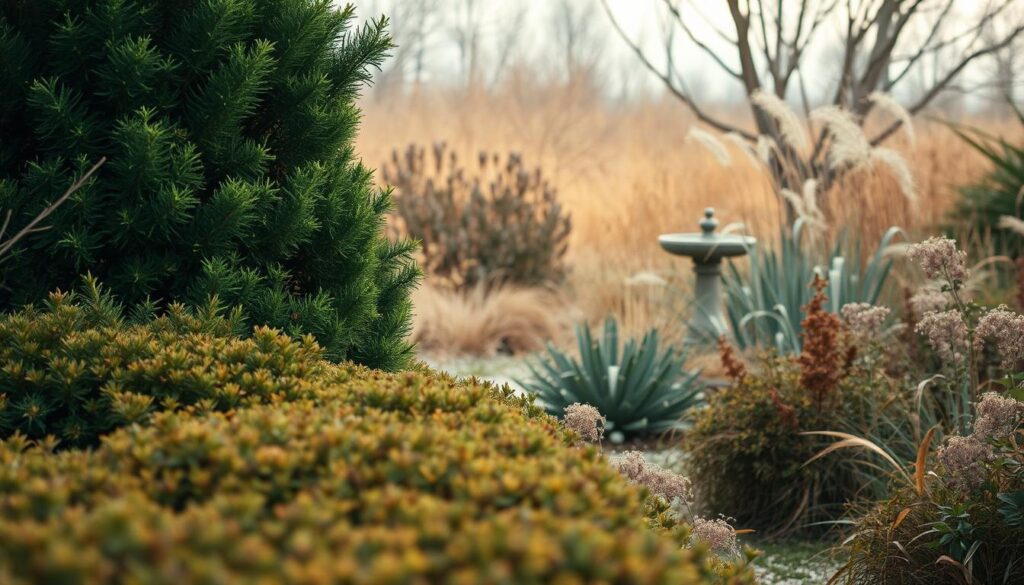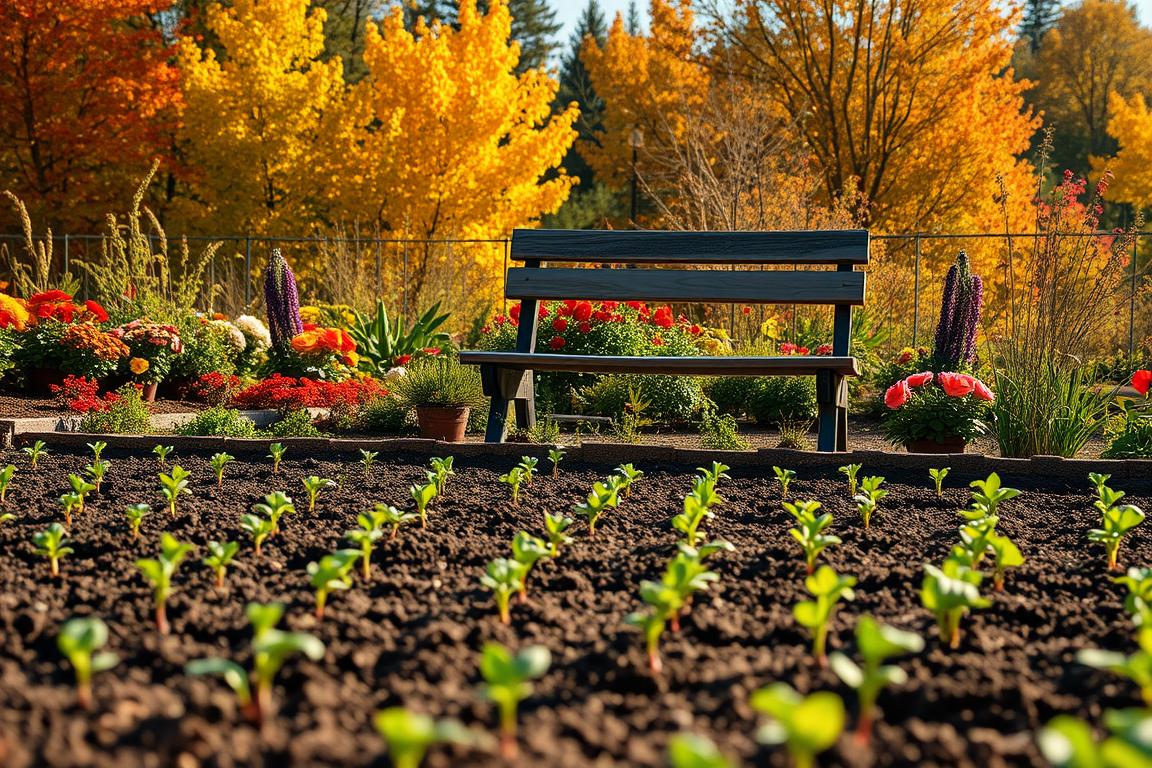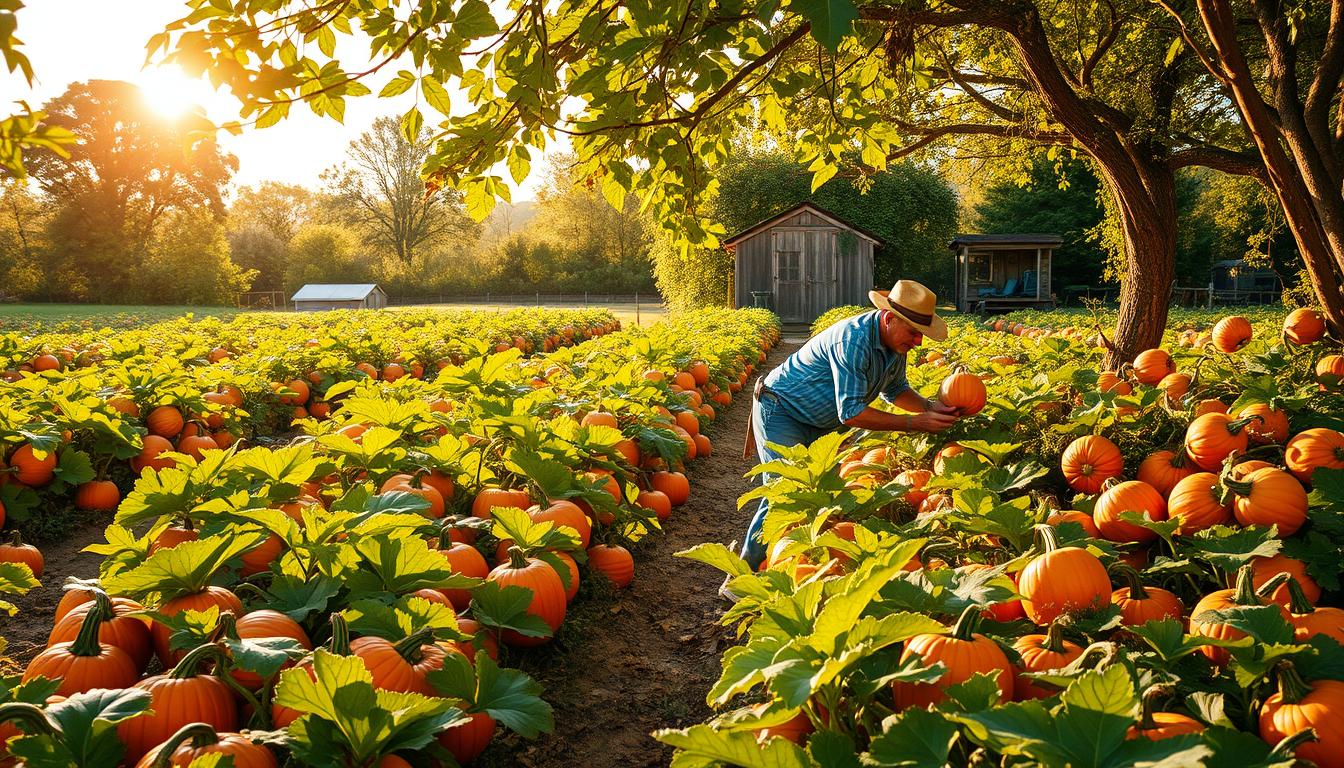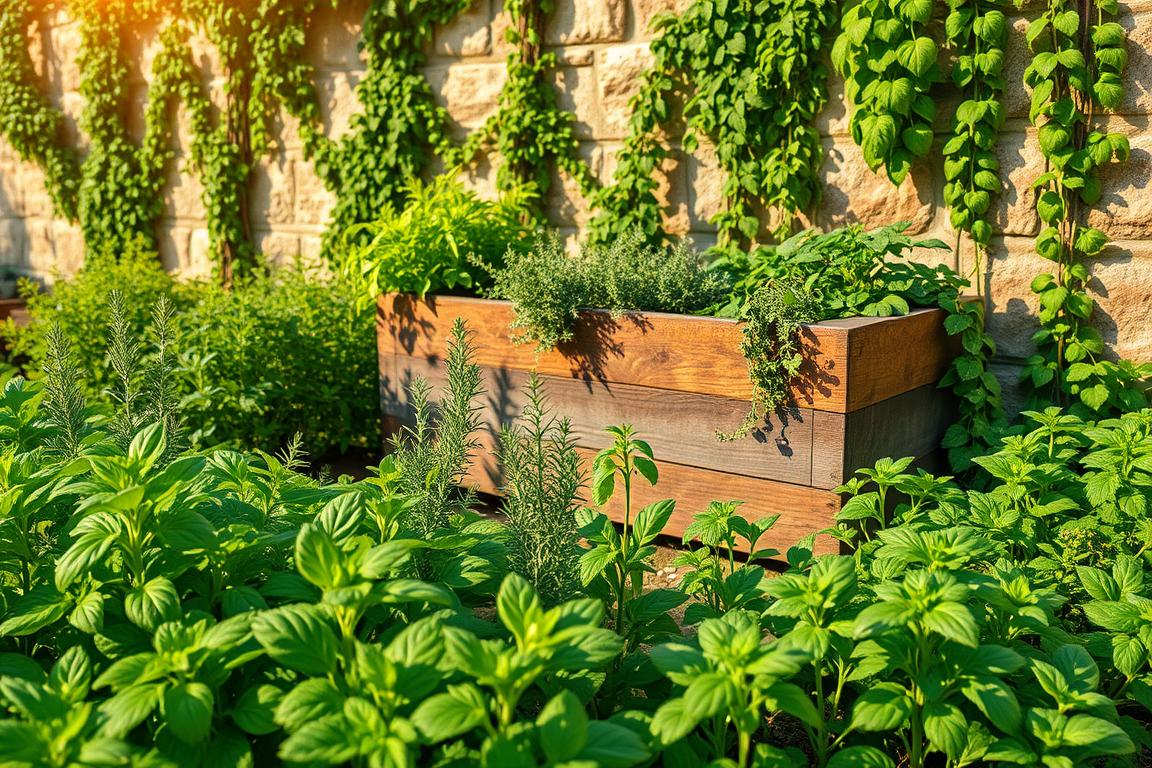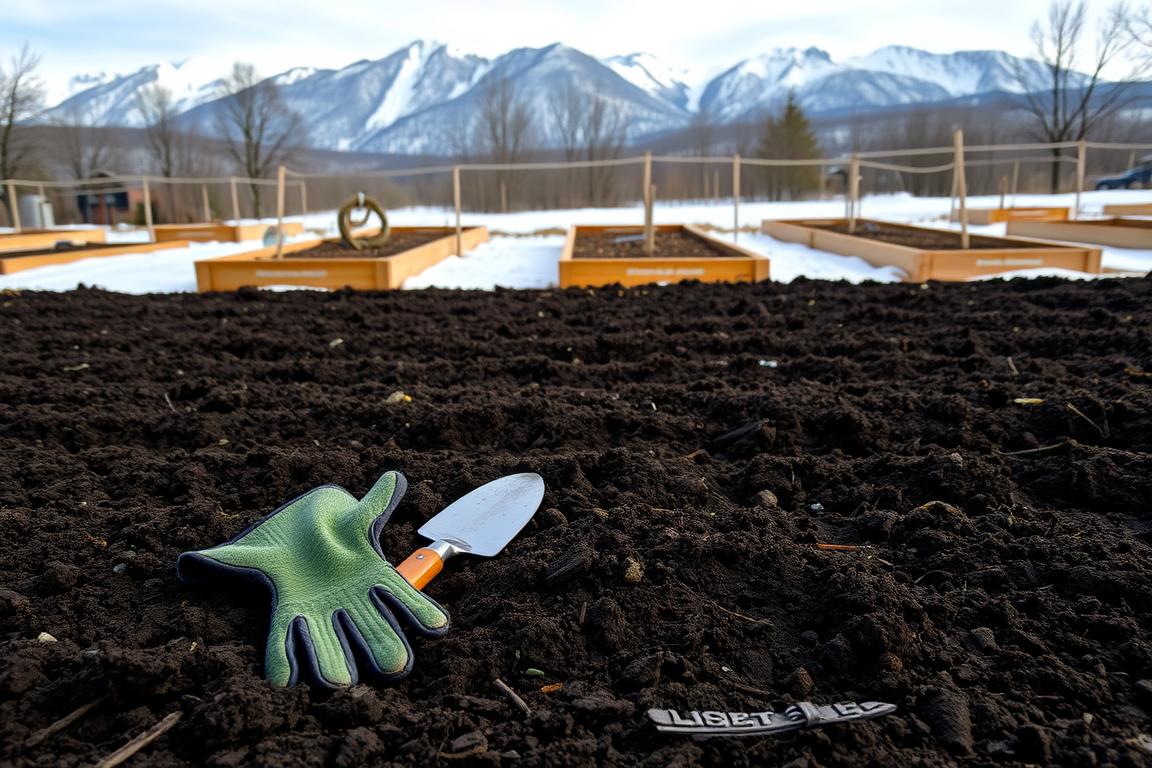We love watching birds in our gardens, especially in late winter. By choosing the right feeders and plants, we can make our gardens bird-friendly. This brings joy and connects us to nature. Let’s explore the best ways to attract birds to your garden in late winter.
Using different feeders like tube, hopper, and suet feeders can attract many bird species. These feeders are key for welcoming winter birds. We’ll look at how to attract birds and use garden feeders effectively.
With a few simple tips and the right feeders, we can attract many bird species. This is a great way to enjoy birdwatching and learn about the birds in our gardens. Let’s start by learning how to attract birds in late winter.
Key Takeaways
- Using the right types of feeders, such as tube feeders, hopper feeders, and suet feeders, can attract various bird species to our gardens in late winter.
- Creating a bird-friendly oasis with plants and feeders can attract a variety of bird species.
- Attracting winter birds to our gardens can be a fun and rewarding experience, providing entertainment and a connection to nature.
- Garden bird feeders are essential for attracting winter birds and creating a welcoming environment.
- By following some simple tips and using the right feeders, we can attract a variety of bird species to our gardens and enjoy birdwatching.
- Learning how to attract birds to our garden in late winter can be a great way to enjoy birdwatching and learn more about the different types of birds that visit our gardens.
Understanding Late Winter Bird Behavior
Exploring backyard bird habitats in late winter is fascinating. Knowing how birds behave helps us attract them to our gardens. Many birds eat more fruit in winter than insects, which they prefer in spring.
Species like chickadees, titmice, and nuthatches visit gardens with the right food and plants. It’s important to understand when and where different birds migrate. This way, we can offer them food and shelter during winter.
Common Species Active in Late Winter
Some birds are more active in late winter. Chickadees and titmice love suet and sunflower seeds. Nuthatches prefer peanuts and tree nuts.
Migration Patterns and Timing
Migration patterns are key to knowing which birds will visit your garden. Some birds go to warmer places, while others stay put. Knowing this helps us create gardens that attract the right birds.
Bird Survival Needs in Cold Weather
In cold weather, birds need food high in energy. Suet and sunflower seeds are great for them. Also, making sure they have fresh water is crucial, as many sources freeze in winter.
Essential Bird Feeding Stations for Late Winter
Exploring bird feeding in winter shows how vital the right feeders are. The Audubon Great Lakes says using different feeders can draw various birds to your garden. Offering a mix of feeders helps meet the needs of different species, making a winter bird feeding guide.
The type of garden bird feeder you pick greatly affects the birds you’ll see. Tube feeders are great for small birds like finches and sparrows. Hopper feeders are better for larger birds, such as cardinals and blue jays. Suet feeders are perfect for woodpeckers and nuthatches.
- Offering a variety of seeds, including black-oil sunflower seeds and nyjer seeds
- Providing suet and other high-energy foods to help birds survive the cold winter months
- Placing feeders in a location that is easy for birds to access and safe from predators
By following these tips, you can attract many bird species to your garden. This way, you can enjoy nature’s beauty, even in the coldest months. With the right garden bird feeders and planning, your outdoor space will become a bird-friendly haven.
Selecting the Right Bird Feed Varieties
Choosing the right bird feed is key to attracting birds in late winter. Our winter birding guide suggests high-energy foods for birds to stay warm. These tips help make your garden a bird-friendly spot.
Sunflower seeds, safflower seeds, and Nyjer seeds are top picks. Sunflower seeds are full of fat and protein, giving birds lots of energy. Safflower seeds are a great choice because they don’t attract squirrels and other pests.
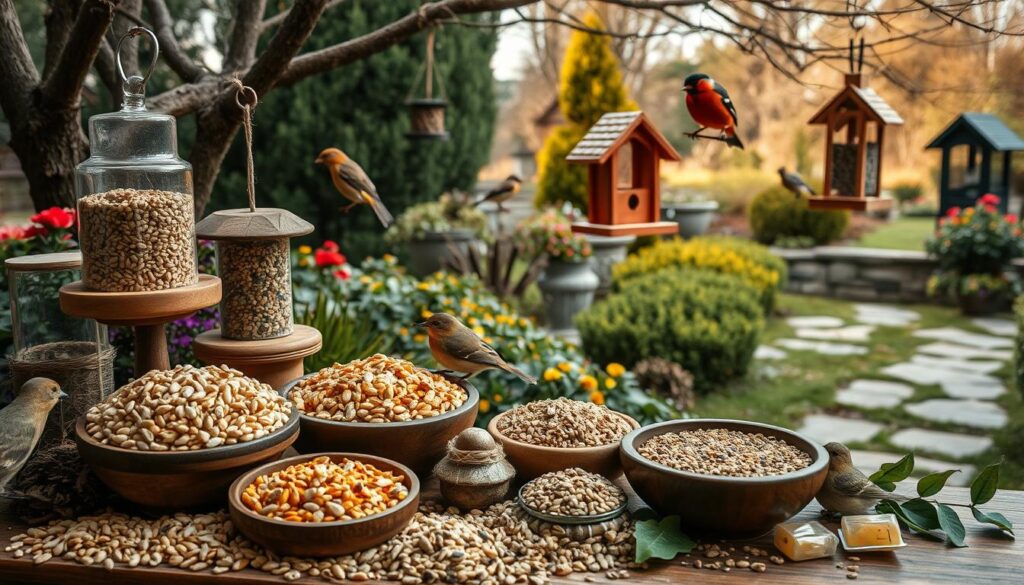
Here are some benefits of different bird feed varieties:* Sunflower seeds: high in fat and protein, attractive to a wide range of bird species* Safflower seeds: less likely to attract squirrels and other pests, rich in protein and fiber* Nyjer seeds: high in oil content, attractive to small finches and other bird species
| Bird Feed Variety | Benefits |
|---|---|
| Sunflower seeds | High in fat and protein, attractive to a wide range of bird species |
| Safflower seeds | Less likely to attract squirrels and other pests, rich in protein and fiber |
| Nyjer seeds | High in oil content, attractive to small finches and other bird species |
Offering different bird feeds can attract many bird species to your garden. Enjoy bird watching by following these tips and using the right feeds.
Creating Winter Water Sources
Creating a bird-friendly garden is key, especially in late winter. Natural water sources are often scarce then. By adding heated bird baths, we ensure birds have water, even when it’s cold.
Audubon Great Lakes says a sturdy birdbath is vital. We can keep water from freezing with built-in heaters or by changing the water often. This simple step can greatly help attract birds.
Some important tips for winter water sources include:
- Heated bird bath options, which can provide a reliable source of water even in freezing temperatures
- Maintaining ice-free water, which can be achieved through the use of birdbaths with built-in heaters or by changing the water regularly
- Using a variety of bird-friendly plants, such as those with high-fat berries, to provide a natural source of food and water
By using these tips and ideas, we can make our gardens welcoming to birds. Remember, providing water is crucial for a bird-friendly garden.
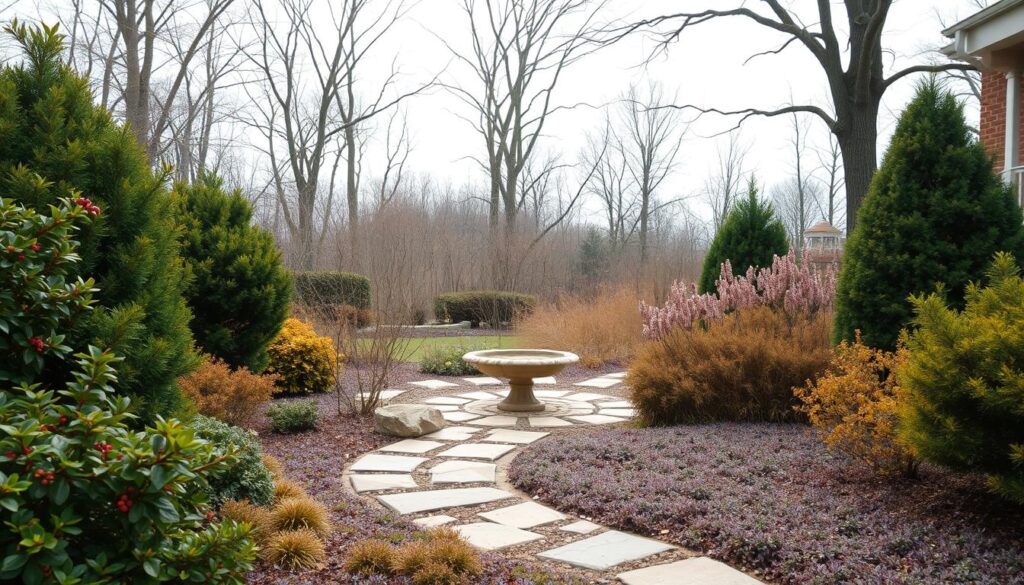
| Heated Bird Bath Options | Benefits |
|---|---|
| Pole Mounted ERVA Heated Birdbath | Provides a reliable source of water, even in freezing temperatures |
| Thermostatically Controlled Outlet | Operates at temperatures turning ON at 32 degrees Fahrenheit and OFF at 50 degrees Fahrenheit |
Providing Shelter and Protection
To make our garden a bird-friendly spot in late winter, we need to focus on shelter and protection. The American Gardener advises using evergreen trees and shrubs for cover. Brush piles and bird nest boxes also help keep birds safe from harsh weather and predators.
We can draw winter birds to our garden by adding native plants like asters, goldenrod, and winterberry. These plants help wildlife in late winter. Leaf piles, for example, protect insects, amphibians, and small mammals from the cold. Setting up bird feeders with seeds, suet, or nuts helps birds store fat for winter, aiding their survival.
Important things to think about for shelter and protection include:
- Planting native trees, shrubs, and perennials in late fall, as long as the ground remains unfrozen
- Creating brush piles from branches, twigs, and leaves to provide cozy homes for small mammals
- Offering piles of logs or rocks as shelter for species that prefer dark and cool spaces for hibernation
By adding these features, we can make a safe haven for garden birds in late winter. This attracts them to our garden. Remember, providing shelter and protection is key to their survival and happiness.
How to Attract Birds to Your Garden in Late Winter: Expert Tips
When we go birdwatching in late winter, we need to make our gardens welcoming. Bird feeding is key to help them stay warm. We should place feeders where birds can easily find them and stay safe from the wind.
Watching birds in winter can be very rewarding. To attract different birds, we can use smart feeder placement and create windbreaks. We also need to manage snow and ice. These steps help make our gardens a bird paradise and let us enjoy nature at home.
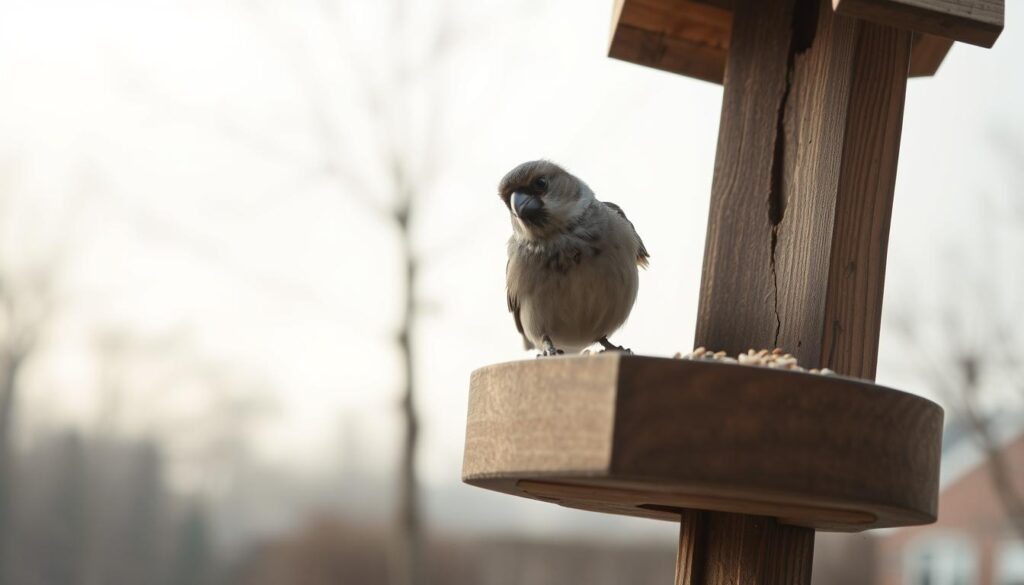
Here are some more tips to attract birds to your garden in late winter:
- Provide a source of fresh water, such as a heated bird bath
- Offer a variety of high-energy foods, such as sunflower seeds and suet
- Create a windbreak using native shrubs or trees
By using these expert tips, we can make our gardens a haven for birds. This way, we can enjoy birdwatching in late winter and help our feathered friends.
| Food Type | Benefits |
|---|---|
| Sunflower seeds | High in energy, attractive to cardinals and chickadees |
| Suet | High in energy, attractive to woodpeckers and nuthatches |
Natural Food Sources in Your Garden
To make our gardens welcoming for birds in late winter, we need to think about food. We can attract birds by choosing native plants and designing our gardens with their needs in mind. Plants like holly and winterberry are great because they offer food for birds when it’s cold.
The American Gardener says holly and winterberry are perfect for feeding birds in winter. Other plants that help include:
- Hawthorn trees, which produce shiny clusters of haws that remain available until February or March
- Teasels, which can produce seedheads that last until December
- Cotoneaster, which bears heavy clusters of berries from November to March
By adding these plants to our gardens, we help birds survive the cold winter. We can also help by offering extra food like fat balls or suet cakes. This extra help is especially important because birds need lots of energy in winter.
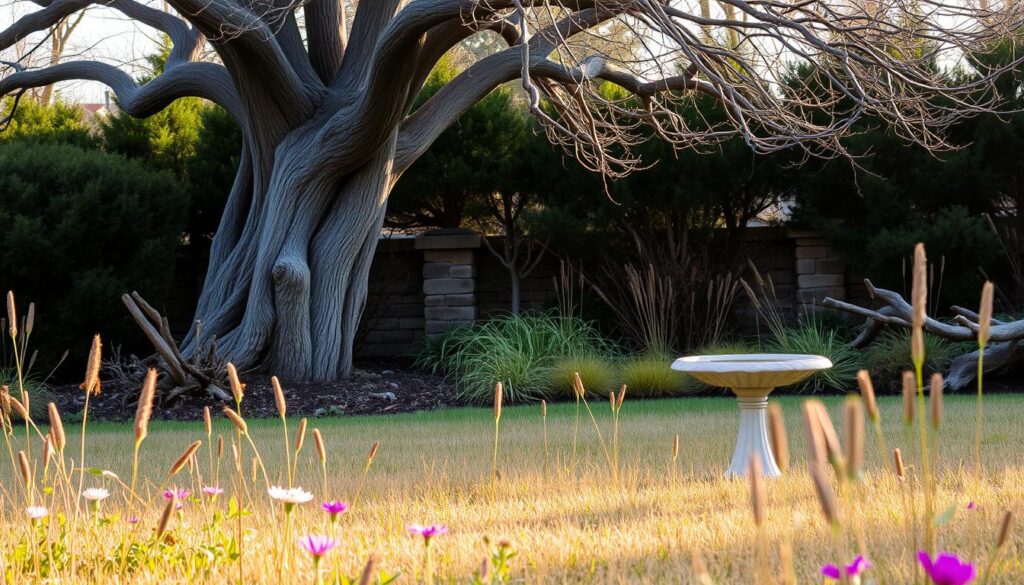
By using these tips, we can make our gardens a safe haven for birds in winter. With a bit of planning, we can turn our gardens into places where birds can find food and shelter. This way, we get to enjoy the beauty of these amazing creatures.
| Plant | Food Source | Availability |
|---|---|---|
| Holly | Berries | Autumn to late winter |
| Winterberry | Berries | November to March |
| Hawthorn | Haws | February to March |
Maintaining a Safe Bird Environment
Creating a bird-friendly garden is all about keeping it safe for our feathered friends. We need to focus on the right food and clean feeders and birdbaths. Audubon Great Lakes says keeping these clean is key to stop disease and keep birds safe.
Native plants are essential for a bird-friendly garden. They need little care and no fertilizer, helping birds through winter. Plants like arrowwood viburnum and winterberry holly are great choices. Late winter tips include offering high-calorie foods like peanuts and suet to help birds stay warm.
Here are some tips for a safe bird environment:
- Clean feeders and birdbaths regularly to prevent the spread of disease
- Provide a mix of different types of food to attract a wider variety of bird species
- Place feeders at varying heights and locations to maximize bird traffic and minimize predation risk
- Use a heated bird bath to provide a reliable source of water in cold weather
By following these tips and using bird-friendly garden ideas, we can make our gardens safe and welcoming. Attracting birds in late winter takes patience and dedication. We must provide the right conditions for them to survive and thrive.
| Native Plant | Benefits for Birds |
|---|---|
| Arrowwood Viburnum | Provides berries for food and shelter |
| Chokecherry | Offers fruit and insects for birds to eat |
| American Black Elderberry | Provides berries and seeds for birds to feed on |
| Winterberry Holly | Offers berries for birds to eat during winter |
Dealing with Winter Garden Challenges
Winter bird feeding is key to helping our feathered friends survive the cold. It’s vital to create a welcoming space for them. By using the right strategies, we can attract many different bird species to our gardens.
Managing predators is a big challenge. We can use barriers or repellents to keep birds safe. The American Gardener says these methods work well. This way, we can enjoy watching birds while keeping them safe.
Managing Predators and Weather Protection
Adding shelter and windbreaks can make our winter garden better. These features attract birds and help other wildlife too. They make our bird watching experiences even more enjoyable.
Keeping our feeders and water clean is also important. It helps prevent diseases and keeps our ecosystem healthy. By following these tips, we can make our winter garden a haven for birds and wildlife.
Photography and Observation Tips
Exploring birdwatching means having the right tools and skills to capture amazing moments. For birdwatching tips, get a good camera with a lens like a super-telephoto or macro lens. A winter birding guide helps find the best times and types of birds to see.
Setting up a bird feeder near a window is great for watching birds safely. The Audubon Great Lakes suggests watching birds in the early morning and late afternoon. This is when they are most active.
Here are some tips for bird photography:
- Use a camera with wide apertures (e.g., f/2.8) for blurred backgrounds
- Telephoto lenses (e.g., 400-600mm) are best for birds in flight
- Macro lenses (e.g., 100mm) are great for close-up shots of insects and small wildlife
- High-capacity memory cards (64GB or more) are needed for burst mode shooting or 4K video recording
By following these birdwatching tips and using the right gear, you can improve your birdwatching. Always remember to keep the birds safe and enjoy watching them in their natural home.
| Equipment | Description |
|---|---|
| Camera | Invest in a good camera with a suitable lens |
| Telephoto lens | Use a telephoto lens (e.g., 400-600mm) for capturing birds in flight |
| Macro lens | Use a macro lens (e.g., 100mm) for close-up shots of insects and small wildlife |
Building a Year-Round Bird-Friendly Garden
We can make our gardens a welcoming place for birds by planting different types of plants. These plants should offer food and shelter all year. The American Gardener says a year-round bird-friendly garden is possible with good planning. By using bird-friendly garden ideas, like native plants and various bird feeders, we can attract many bird species.
To draw birds to our gardens, especially in late winter, we need to provide the right food and water. High-energy foods like black oil sunflower seeds and suet are great. Also, fresh water sources, like heated birdbaths, are essential. By following these tips, we can make a bird paradise and enjoy their songs all year.
When creating a year-round bird-friendly garden, consider these key elements:
- Native plants that provide essential resources for birds during winter
- Diverse bird feeders stocked with various seeds and nuts
- Heated birdbaths and fresh water sources
- Evergreens and brush piles that offer shelter and protection
By adding these elements and using attracting birds to garden strategies, we can build a thriving ecosystem. This ecosystem supports local biodiversity. As we plan our gardens, let’s remember to create a welcoming space for birds and other wildlife. Enjoying the benefits of this is a joy.
| Season | Food Sources |
|---|---|
| Spring | Worms, flowers, insects, and healthy soil |
| Summer | Ripening berries, seeds, and insects |
| Fall | Grains, nuts, seeds, and leaf litter insects |
| Winter | Deadwood, winter berries, and grass grains |
Conclusion
Creating a bird-friendly garden is a year-round task. By keeping a variety of plants, feeders, and water sources, we welcome many birds. This is true for birdwatching, feeding, and watching birds in winter.
Planting native species that offer food is key. So is placing bird feeders and birdbaths right. Adding shelter and nesting sites makes your garden even more appealing. This helps birds survive winter’s cold.
By making our gardens bird-friendly, we enjoy their beauty and help protect them. Let’s keep our gardens safe for birds all year. This way, they have a place to thrive.
FAQ
What are the common bird species active in late winter?
Chickadees, titmice, and nuthatches are common in late winter.
How do migration patterns and timing affect which birds visit my garden in late winter?
Migration patterns and timing are key. They decide which birds visit your garden in late winter.
What types of bird feeders are most effective for attracting birds in late winter?
Tube, hopper, and suet feeders attract birds well in late winter.
What types of bird feed should I offer to attract birds in late winter?
Offer suet, peanuts, sunflower seeds, and safflower seeds. They are high-energy foods that attract birds.
How can I create a reliable water source for birds in late winter?
Use heated bird baths and change birdbath water often. This keeps water available even in cold weather.
How can I provide shelter and protection for birds in my late winter garden?
Use evergreen trees, brush piles, and bird boxes. They offer shelter from cold and predators.
Where should I place bird feeders in my garden to attract the most birds in late winter?
Place feeders where birds can easily reach them. Choose spots that protect from wind and elements.
What types of natural food sources can I provide in my garden to attract birds in late winter?
Holly and winterberry are good for natural food. Choose native plants to match your local climate and birds.
How can I maintain a safe bird environment in my garden during late winter?
Keep feeders and birdbaths clean. This prevents disease and keeps birds safe.
How can I deal with winter garden challenges to make my garden more bird-friendly in late winter?
Manage predators, provide shelter, and prevent disease. These steps make your garden welcoming to birds.
What are the best times and equipment for birdwatching in my late winter garden?
Watch birds in the early morning or late afternoon. The right equipment helps you see more species.
How can I build a year-round bird-friendly garden to attract birds in late winter and throughout the year?
Plant a variety of food and shelter plants all year. This attracts birds throughout the year.


